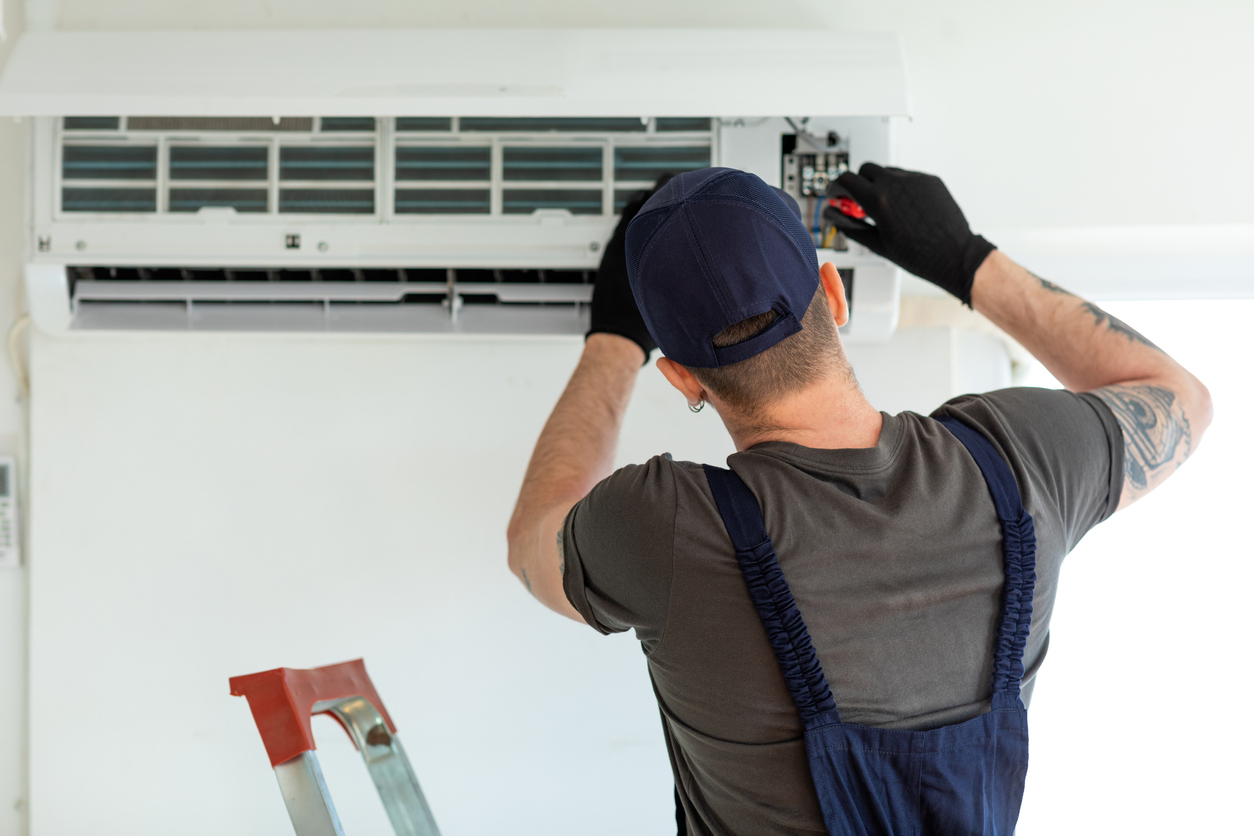Could a Home Air Quality Test Improve Your Child’s Asthma?

According to the Centers for Disease Control and Prevention (CDC), 5.8 million people visit the doctor every year due to asthma. As a parent, it’s heartbreaking to watch your child endure a coughing fit or rush them to the hospital as they struggle for air. When your little one is diagnosed with asthma, it can affect the whole family. But there are lots of small lifestyle changes you can make to reduce your child’s symptoms.
If you’ve scoured the information sheets given to you by doctors and meticulously taken notes as your physician gives you tips on managing childhood asthma, you’re not alone. In your research, you may also have found that asthma is linked to exposure to air pollution, as reported by the United States Environmental Protection Agency (EPA). Not only can air quality issues exacerbate a child’s asthma symptoms or trigger asthma attacks, but they can also cause a child to develop asthma. With today's changing climate, this is a big issue for many people worldwide.
To create the most significant positive impact on your child’s asthma, one of the best places to make changes is in the home. The National Library of Medicine states that children spend as much as 90% of their time indoors, making monitoring indoor air quality essential in preventing health problems. From testing the air quality to making small changes in the home, here’s everything you need to know about the link between indoor air quality and asthma in children.
Asthma: Diagnosis, Symptoms, and Triggers
A child is diagnosed with asthma when their lungs and airways are inflamed easily by common environmental allergens, catching a cold, heavy activity, or air pollutants. While these are things present in most people’s daily lives, those with asthma react to these irritants differently. Common symptoms of asthma include frequent coughing while asleep, during exercise, or when exposed to cold air, chest tightness, and a wheezing sound when breathing.
Aside from air quality problems, common asthma triggers include pollen, mold, pet dander, a cold, weather, and exercise. While you can’t avoid all triggers, every little step makes a big difference, such as frequently cleaning bed linens, replacing filters in air conditioning and central heating units, and using a vacuum with a HEPA filter.

Air Pollution and Indoor Air Pollutants
The World Health Organization defines air pollution as “contamination of the indoor or outdoor environment by any chemical, physical or biological agent that modifies the natural characteristics of the atmosphere”. This includes man-made sources such as motor vehicles, tobacco smoke, and household combustion devices, as well as naturally occurring sources, including smog, wildfires, and dust particles.
The most prevalent indoor air pollutants are radon, volatile organic compounds (VOCs), combustion pollutants from burning materials, mold, and secondhand smoke. Let’s break each of these down.
Radon
The EPA states that “radon is a radioactive gas that is formed in the soil. It can enter indoors through cracks and openings in floors and walls that are in contact with the ground.” Because you can’t see or smell radon, testing is the only way to know your home levels.
Volatile Organic Compounds
VOC emissions are carbon-based gasses that irritate the eyes, nose, and throat, and can lead to difficulty breathing. The primary sources include paint, aerosol sprays, cleaning supplies, pesticides, air fresheners, building materials, and disinfectants.
Combustion Pollutants
Any burning materials in the home can create harmful gasses or particles. It usually comes from improperly vented appliances, such as dryers, space heaters, wood stoves, fireplaces, and gas stoves.
Mold
Mold is one of the most common indoor air pollutants that trigger asthma. The EPA describes mold as “living things that produce mold spores that float in the air, land on damp surfaces, and grow.” Examples of household items or areas that often grow mold include shower curtains, damp basements, windows, and carpets.
Secondhand Smoke
The EPA states that “Children are especially vulnerable to secondhand smoke. It can cause or worsen asthma symptoms and is linked to increased risks of ear infections and Sudden Infant Death Syndrome (SIDS).”
Potential Impacts of Poor Indoor Air Quality on Children

Data from WHO shows that 99% of people in the world breathe air that contains high air pollution levels exceeding WHO guideline limits. However, children are more susceptible to high concentrations of polluted air than adults for many reasons, including their still-developing lungs and the amount of air they breathe in relation to their low body weight. Air pollutants can trick a toddler’s immune system into setting up an inflammatory response. In pediatric asthma, when young children already become inflamed more easily than others, this inflammatory response can be especially dangerous.
According to the AAAAI, air pollution exposure in early childhood can contribute to the development of asthma in children “by impacting the developing lung and immune system,” which can impact respiratory health for the rest of their life. The World Health Organization (WHO) also reports 4.2 deaths every year as a result of ambient air pollution and 3.2 million deaths from exposure to indoor air pollution.
But how exactly does air pollution cause long-term asthma? According to the EPA, “evidence suggests air pollutants suppress genes that regulate the immune system’s ability to differentiate an allergen from a dangerous foreign substance, such as a virus or bacteria. The immune system then goes into action, setting up an inflammatory response whether the substance is harmful or not, which leads to asthma.”
How Can You Test Air Quality In Your Home?
Each home is unique, and there’s not a single test that can measure all areas of indoor air quality (IAQ). However, there are several tests that collectively monitor all critical areas, such as radon, humidity, mold, VOCs, and more.
1. Use an Air Quality Monitor
Air quality monitors are useful for detecting a variety of pollutants, such as particulate matter, volatile organic compounds, levels of carbon dioxide, levels of formaldehyde, and more. Some advanced air quality tests even monitor humidity levels and temperature, which helps improve asthma. According to the EPA, the optimal home humidity level is between 30% and 50%. “High humidity keeps the air moist and increases the likelihood of mold. To increase humidity, use a vaporizer or humidifier. To decrease humidity, open the windows if it is not humid outdoors. If it is warm, turn on the air conditioner or adjust the humidity setting on the humidifier.”
2. Conduct a Mold Test
If you’re concerned about mold in your home, consider carrying out a mold test. While mold is not something that needs to be continually monitored, it’s helpful to conduct a mold test if your child has asthma or if anyone in the house is experiencing symptoms. There are several types of tests, from swabs to air pumps, to tape strips.
3. Use a Radon Monitor
The uranium naturally found in rocks and soil breaks down over time, producing radon gas. However, too much radon gas seeping into your home through the foundation can be harmful. Keeping a radon monitor in your home is recommended, as it will notify you if it ever detects unsafe levels.
4. Install a Carbon Monoxide Detector
While it’s fairly common to have a carbon monoxide detector in new homes, older homes may need to install one. Possible sources of CO gas include water heaters, gas stoves, boilers, and other household appliances. Because CO is odorless, these tests will detect high levels long before people realize an issue exists.
The Best Home Air Quality Tests
VivoSun Air Quality Monitor
Best Air Quality Monitor
This air quality tester can accurately detect the levels of CO2, Formaldehyde (HCHO), Volatile Organic Compound (TVOC), and Particulate Matter (/PM2.5/PM10) in the air. All data is clearly shown on the LCD screen for easy viewing, with green marking fresh air space and yellow or red marking bad air quality.
Reviews:
“This air quality meter is pretty awesome! It's great to know if the air you are breathing is safe from VOCs and particulates, and additionally awesome to be able to monitor CO2 levels for plants or for home and personal safety…. The unit was very responsive in detecting increased CO2 levels from simple breath exhales towards the unit. I also tested the VOC meter by opening up a can of acetone, as shown in the pics, which is also detected in large quantities very quickly. I also noticed that when I went into a wood shop, the particulate levels rose. This thing is simple and elegant. Highly recommended.”
Seeml Labs DIY Mold 3 Test Kit
Best Mold Test
Receive same-day results as soon as the lab receives the samples. The kit includes one swab and two tape lifts that allow for up to 3 separate samples. Plus, it tests for all types of mold.
Reviews:
“I am still impressed by how quickly the results were emailed to me. This test informed me exactly what molds I'm working with. I would definitely buy it again if ever needed.”
Airthings 2989 View Radon Monitor
Best Radon Monitor
Not only does it monitor radon levels, but it also measures home humidity and temperature. It connects to WiFi or plugs in with a USB cable. Plus, you can view the data anywhere with the free app and receive notifications.
Reviews:
“I am a retired chemist so I’m concerned about radon emissions. I had absolutely no knowledge of this product or company until I found out that I have a lot of radon in my new home. So, I purchased a model 223 a couple (of) weeks ago and am using it to help me understand the situation while I wait for remediation. It’s doing a wonderful job of informing me of ‘hot spots’ and the average level throughout the house while I hold my breath."
Carbon Monoxide Detector
Best Carbon Monoxide Detector
Even during a power outage, this detector contains a battery backup, so it never stops testing. It easily plugs into any outlet in the home and detects the presence of CO using electrochemical sensing technology.
Reviews:
“Little did we know that a hole in our flue would send carbon monoxide into our home! But it did and when the detector sounded too loudly to ignore, we aired out the house, called for help, and the problem was solved. The technicians all told us this excellent monitor saved us from the silent killer. Thank you so much.”
What are the Best Ways to Remove Indoor Air Pollutants?

Being educated on pediatric asthma and IAQ is the first step in keeping your child healthy. Aside from air quality tests, here are several other ways to remove indoor air pollutants.
- • If financially possible, choose not to live near a major road. Since nitrogen dioxide pollution is mainly caused by vehicles, living at least 200 yards from a major road can encourage clean air. If it is financially feasible for you to live away from major roads, it will make a huge difference. If this isn’t possible, try and reduce the amount of time your child spends outside near major roads.
- If possible, set your HVAC system to re-circulate air and shut outdoor intakes.
- The EPA recommends improving home ventilation. “Increasing the amount of fresh air brought indoors helps reduce pollutants inside. When weather permits, open windows and doors, or run an air conditioner with the vent control open. Bathroom and kitchen fans that exhaust the outdoors also increase ventilation and help remove pollutants.”
- Ban smoking in your home. Since secondhand smoke is one of the top air pollutants, keeping your home smoke-free is one of the best ways to increase your IAQ. Tobacco smoke lingers in the air and in furniture upholstery, clothing, and even building materials and contains more than 7,000 chemicals.
- Regularly change HVAC filters that trap pet dander, pollen, dust mites, and other pollutants.
- Consider installing a whole home air purifier. Not only does it filter out particles in the air, such as dust and smoke, but it also circulates clean air back into your home. A study from the AAP states that using an air purifier has been shown to reduce indoor particulate matter concentrations by approximately 25% to 50% and reduce asthma symptoms and exacerbations.
Outdoor air pollution can also affect home air quality, and keeping your house windows closed when the Air Quality Index (AQI) is high can decrease indoor air pollutants. The Air Quality Index (AQI) was created to quantify the levels of air pollution and the possibility of potential health effects. Each rating aligns with a color. For example, a green AQI rating under 50 is the best, a yellow rating from 51 to 100 is moderate, and an orange rating from 101 to 150 signifies poor air quality that is unsafe for toddlers with severe asthma, respiratory infections, bronchitis, and compromised lung function as well as those with lung cancer or lung disease. You can check your local air quality daily with AirNow.gov and limit outdoor activities if the levels are unsafe.

